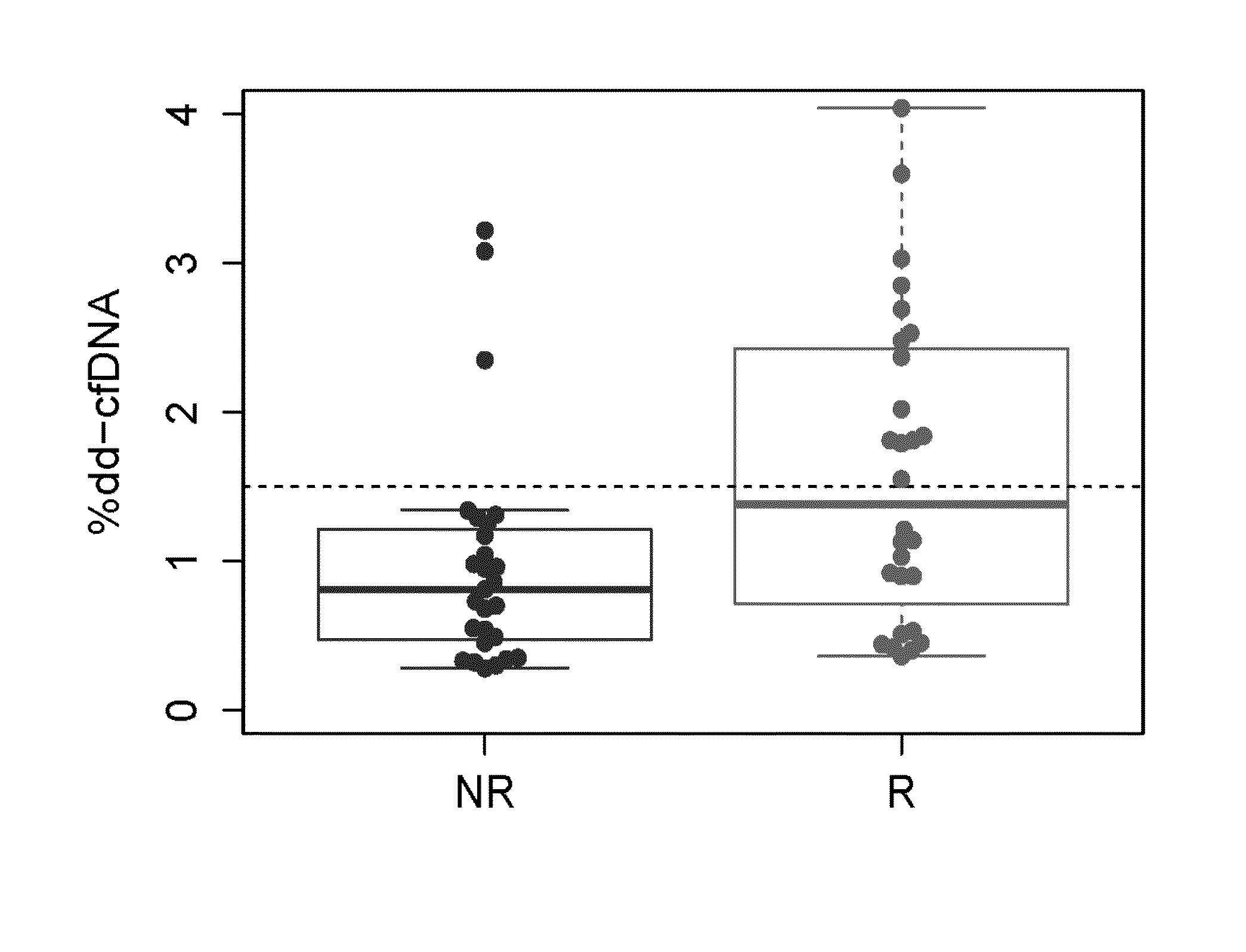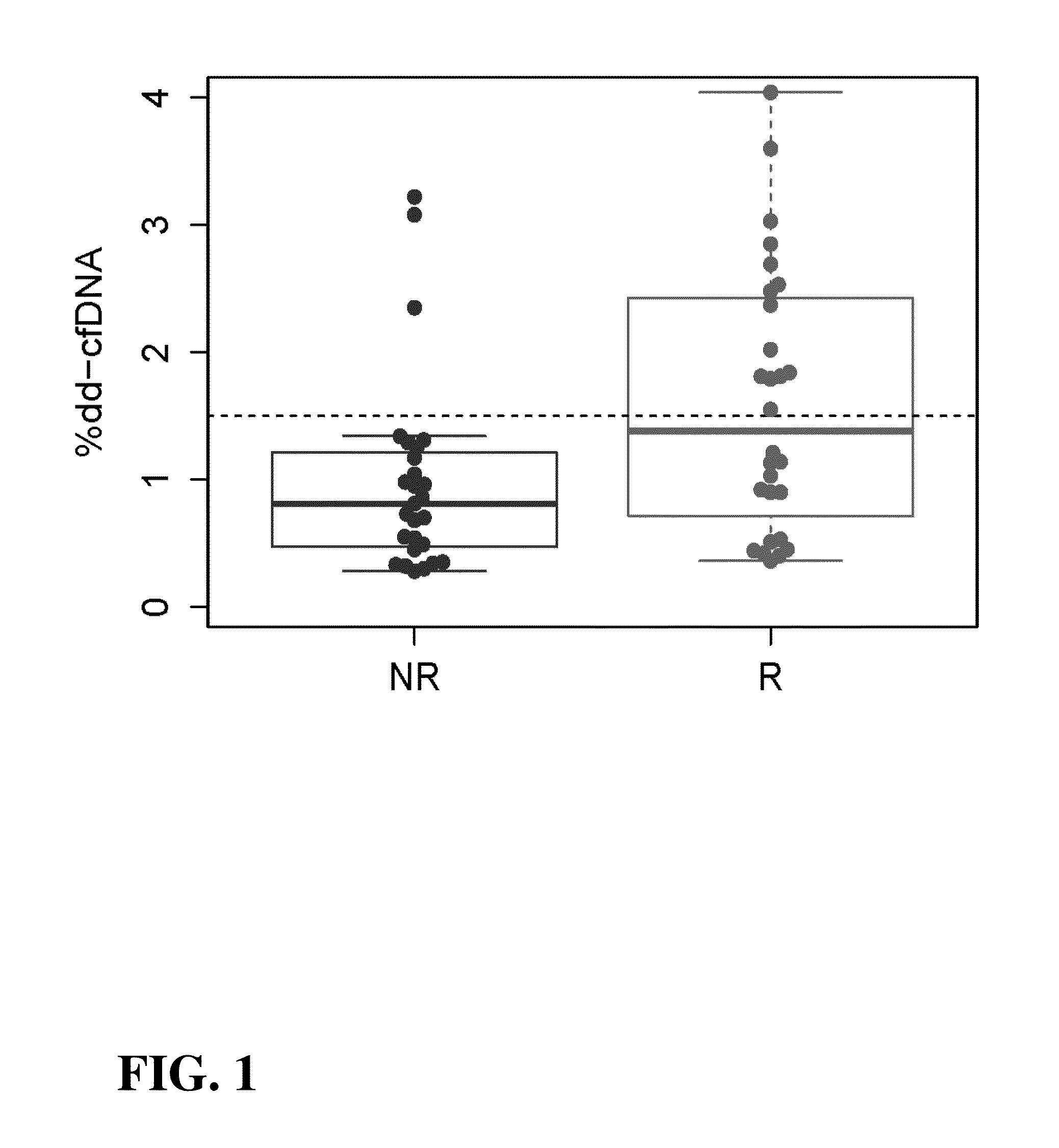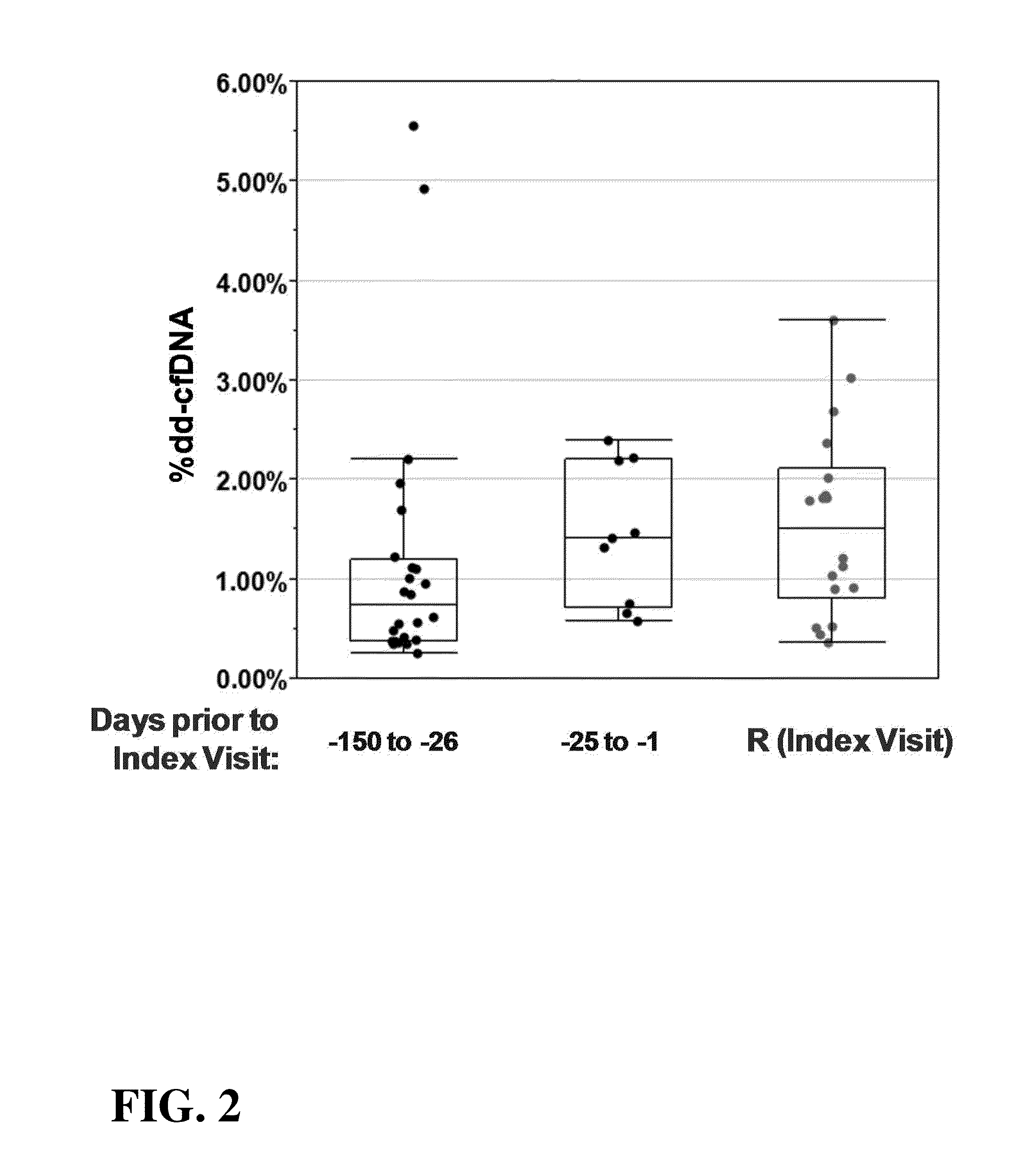Methods of monitoring immunosuppressive therapies in a transplant recipient
a technology of immunosuppressive therapy and transplant recipient, which is applied in the field of immunosuppressive therapy monitoring in a transplant recipient, can solve the problems of the burden on the patient, and the inability to monitor so as to increase the level or variance, the effect of decreasing the level or variance of the donor and increasing the amount of immunosuppressive therapy being administered to the subj
- Summary
- Abstract
- Description
- Claims
- Application Information
AI Technical Summary
Benefits of technology
Problems solved by technology
Method used
Image
Examples
example 1
Analysis of Cell-Free DNA to Determine Status of Transplanted Organ in a Transplant Recipient and Determine Need to Adjust Immunosuppressive Therapy
[0083]This Example demonstrates analysis of samples containing cell-free DNA from a transplant recipient to determine the level of donor-derived cell-free DNA in the samples. Changes in the levels of or variance in the donor-derived cell-free DNA over time are used to diagnose the status of the transplanted organ in the transplant recipient, as well as inform the need to adjust or maintain immunosuppressive therapies being administered to the transplant recipient.
[0084]Subject Selection
[0085]A human patient is selected who was the subject of a kidney transplant 12 months prior to this assay as described in this Example. The patient is undergoing treatment with immunosuppressive therapy to prevent rejection of the allograft. Separate plasma samples will be collected from this subject on a weekly basis over the course of three consecutive ...
example 2
Additional Analysis of Cell-Free DNA to Determine Status of Transplanted Organ in a Transplant Recipient and Determine Need to Adjust Immunosuppressive Therapy
[0105]This Example demonstrates additional analysis of samples containing cell-free DNA from a transplant recipient to determine the level of donor-derived cell-free DNA in the samples that builds upon the analysis described in Example 1. Changes in the levels of or variance in the donor-derived cell-free DNA over time are used to diagnose the status of the transplanted organ in the transplant recipient, as well as inform the need to adjust or maintain immunosuppressive therapies being administered to the transplant recipient.
[0106]Subject Selection
[0107]A human patient is selected who was the subject of a kidney transplant 12 months prior to this assay as described in this Example. The patient is undergoing treatment with immunosuppressive therapy to prevent rejection of the allograft. Separate plasma samples will be collecte...
example 3
Analysis of Cell-Free DNA to Determine Status of Transplanted Organ in a Heart Transplant Recipient and Predict Need to Adjust Immunosuppressive Therapy
[0127]This Example demonstrates analysis of samples containing cell-free DNA from a set of 18 transplant recipients to determine the level of donor-derived cell-free DNA in the samples. Changes in the levels of donor-derived cell-free DNA over time are used to diagnose the status of the transplanted organ in the transplant recipient and predict future status of the transplanted organ, as well as inform the need to adjust or maintain immunosuppressive therapies being administered to the transplant recipient.
[0128]Subject Selection
[0129]Human patients were selected who were the subject of a heart transplants prior to this assay as described in this Example. The patients were undergoing treatment with immunosuppressive therapy to prevent rejection of the allograft. Separate plasma samples were collected from these subjects at visits dic...
PUM
| Property | Measurement | Unit |
|---|---|---|
| Digital information | aaaaa | aaaaa |
| Time | aaaaa | aaaaa |
| Frequency | aaaaa | aaaaa |
Abstract
Description
Claims
Application Information
 Login to View More
Login to View More - R&D
- Intellectual Property
- Life Sciences
- Materials
- Tech Scout
- Unparalleled Data Quality
- Higher Quality Content
- 60% Fewer Hallucinations
Browse by: Latest US Patents, China's latest patents, Technical Efficacy Thesaurus, Application Domain, Technology Topic, Popular Technical Reports.
© 2025 PatSnap. All rights reserved.Legal|Privacy policy|Modern Slavery Act Transparency Statement|Sitemap|About US| Contact US: help@patsnap.com



